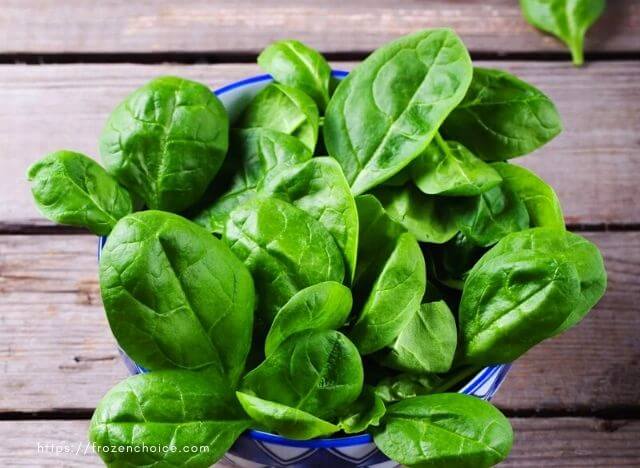If you have fresh spinach and you want to save for later use, freezing is a great way to preserve it. You may wonder whether freezing spinach lose its nutrients. Although the texture of spinach will change when frozen, the nutrients and flavor of the vegetables will remain the same.
There are three ways to freeze fresh spinach, depending on the needs and preferences of your family, you can choose the most suitable way.
Does freezing spinach lose nutrients?
Freezing spinach does not lose its nutrients. Spinach retains its minerals and vitamins in the freezer. To preserve its beneficial properties and flavor, you need to know how to freeze spinach properly. For freezing, use airtight containers with tight-fitting lids. In addition, you are also allowed to pack green vegetables in many bags and put them in cardboard boxes.
Spinach does not tolerate extreme heat. After quick freezing, it should be placed in the food storage compartment, where it is kept at a constant temperature. You should not freeze spinach more than once.
Make sure you get enough frozen spinach to use, and don’t take too much-frozen spinach out of the fridge, as you won’t be able to re-freeze them. The shelf life of frozen spinach should not exceed six months.
Types of spinach
Spinach is a green leafy vegetable. Known scientifically as Spinacia oleracea, spinach belongs to the Amaranth family.
Basically, spinach is divided into 3 main types: Savoy spinach, Semi-savoy spinach and Smooth-leaf spinach. Other variations also fall into these 3 categories.
Savoy spinach
It is the most basic form and classified as Spinacia oleracea. It has dark green, wrinkled leaves and a crunchy texture. Thanks to its flavor, this spinach can be used as a substitute for kale. Another advantage of savoy spinach is that you can cook it for hours, its texture still remains the same.
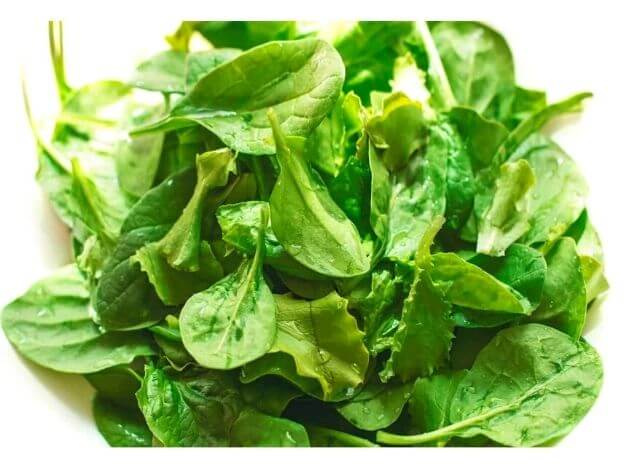
Savoy spinach is further divided into Bloomsdale and Regiment spinach.
Semi-savoy spinach
Its taste and flavor are similar to Savoy spinach. However, its leaves are less wrinkled. It is resistant to pests and diseases, making it a favorite choice among gardeners.
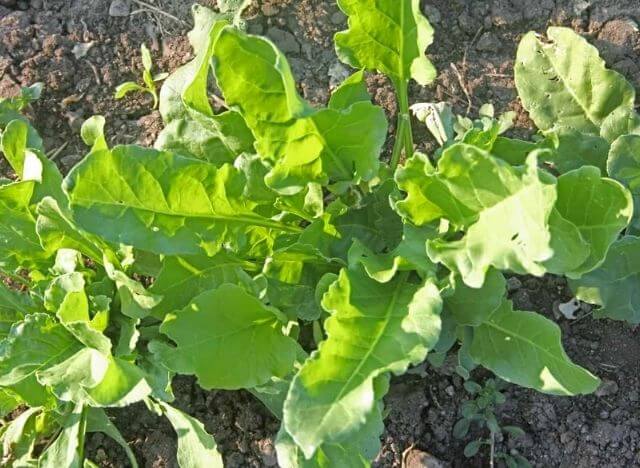
This crispy spinach has four basic types: Indian Summer, Tyee, Catalina, and Teton spinach.
Smooth-leaf spinach
As the name suggests, its leaves are smooth without wrinkles, making it easy to wash. It has wide and flat leaves which grow very fast, so it is the number one choice for most gardeners.
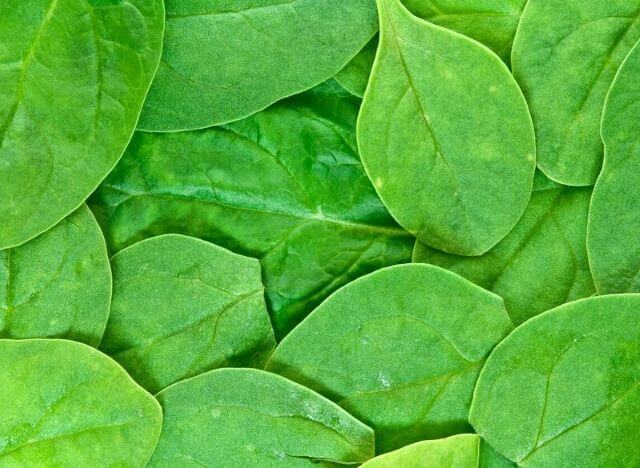
This flat-leaf spinach consists of two major types: Space spinach and Red cardinal spinach.
Besides the 3 main types, the alternative spinach varieties can be mentioned as New Zealand spinach and Malabar spinach.
Which type of spinach is best?
Among the 3 main types of spinach mentioned above, the Savoy types are the most preferred for the home garden and fresh market use. The reason is that they look and taste better; can be kept longer and have less oxalic acid than smooth leaf types.
What type of spinach is the healthiest?
It is the Baby spinach that comes from the smallest leaves of the flat-leaf spinach. It contains all the health benefits of large-leaf spinach. You can find a healthy dose of vitamins A and C, folate, iron and calcium with only 7 calories per cup.
Nutritional value of spinach
Spinach originated in Persia but is now produced mainly in China and the US. It is packed with nutrients, antioxidants and is considered a healthy food.
Eating spinach can be good for your eyes, reduce oxidative stress, help prevent heart disease and cancer, and lower blood pressure.
Besides, eating spinach is also beneficial for health in many ways, and it contains a large amount of all sorts of valuable nutrients. Without a doubt, spinach is a healthy food, delicious both on its own and in cooking.
There are many ways to prepare spinach.
How to freeze spinach
Freeze fresh spinach
1. Wash your spinach properly
This an essential step is to remove dirt and bacteria in vegetables. Put spinach in a basin of cool water and gently shake the pot with your hands to wash them thoroughly. Remove yellowed, damaged, or withered leaves.
2. Use paper towels to squeeze and dry spinach
After the vegetables drain water, wrap them in a stack of paper towels. Gently squeeze the paper towel to remove any water from the vegetables. Try to make the spinach as dry as possible.
3. Cut spinach into bite-sized pieces if necessary
With larger leaves, you should cut them in half to make them easier to eat. Although frozen spinach will soften when defrosted, large pieces are still challenging to eat. You need to remove tough stems and leaf veins while chopping vegetables.
If you’re freezing small spinach, you don’t need to chop or remove the stalks.
4. Freeze spinach in zippered and labeled bags
Place the spinach in a freezer bag, and close the zipper almost tightly. Seal the plastic bag and put spinach in the freezer.
Spinach can be stored this way for up to 6 months. Remember to write down the date and content, so you will know what it is inside and when to use it.
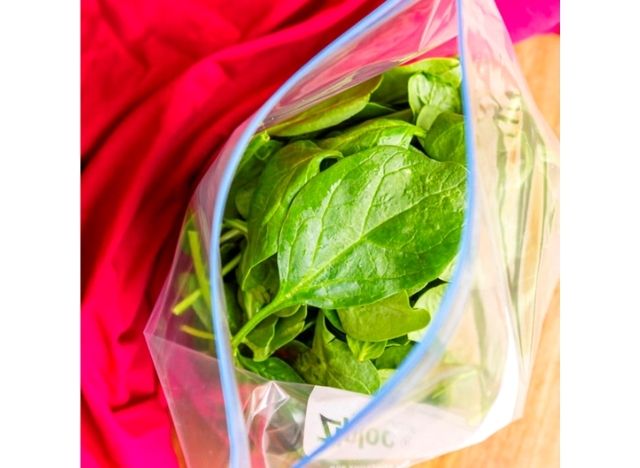
Blanch the spinach before freezing
Spinach can be blanched before storing. Due to the effect of blanching with boiling water, the color of spinach remains completely intact. Moreover, the blanched spinach will retain more nutrients.
Here are the steps:
- Wash spinach leaves under running water and pat dry. Then you should cut them into strips 1 cm wide.
- Put the spinach in a colander or sieve and soak in boiling water for about 2 minutes.
- Then, transfer and put the spinach in a bowl of ice water for 1 minute.
- Remove the damaged part and let the spinach drain.
- Put them in the boxes, close the lids. If you are using a storage bag, expel excess air out of the bag as much as possible.
- Put the container in the freezer for storage.
You may also like: How to Freeze Brussels Sprouts Without Blanching?
Freeze spinach puree
Freezing spinach puree is another popular method for preserving spinach.
- Rinse the spinach under running water. Spinach leaves are cut into 1 cm thick strips.
- Put the spinach in a blender with water. If you have lots of spinach, divide into different batches. Add water as needed and blend until it is smooth.
- Spinach puree is distributed in boxes. You can also use silicone molds or ice trays.
- Put them in the freezer for storage.
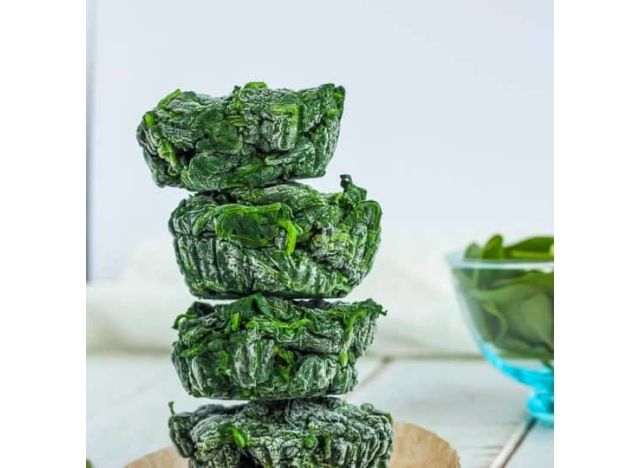
How much nutrition do you lose by using frozen spinach instead of fresh?
Spinach is rich in vitamins and minerals. It also provides a good source of phytochemicals, such as carotenoids and flavonoids.
Overall, the nutrients in spinach are similar whether you use it fresh or frozen. But compared to the frozen spinach, the freshly harvested spinach provides more folate and Vitamin B.
However, recent research has found that when fresh spinach sits in a truck for long hauls or stays in your refrigerator for a week, folate levels decrease dramatically. In this case, fresh spinach contains less folate than the frozen spinach. Frozen spinach is unlikely to mean any loss in beta-carotene content.
Frozen spinach is a great way to provide the nutrients in soups and sauces. Here are some tips to remember when using frozen spinach:
- With fresh or frozen spinach, you should cook them by steaming, microwaving, sautéing, or pan-frying to ensure the folate and vitamin C will be retained.
- The vitamin will be cut in half if you boil spinach in a pot of hot water.
- When using frozen spinach, if you do not thaw them first, the vitamin C will be loss.
Why people love frozen spinach?
- Great benefits to health: As it is rich in Iron, Vitamin K, calcium and lots of other nutrients, spinach is one of the most important foods that the body needs.
- Making your meal healthier: Frozen spinach can be added to many meals to boost nutrients, even the unhealthy meals. For example, if you are making scrambled eggs, Pasta, Pizza, a cheese dip or anything similar, you can add some spinach to make them healthier.
- Frozen spinach may contain more nutrients: Fresh spinach, during the time of transportation or storing in refrigerator may lose folate and some of its vitamins. Therefore, you should eat fresh spinach as soon as possible to make sure it is safe and good for health. Frozen spinach can retain the nutrients when it is frozen, so it can be healthier than fresh spinach.
- Convenient for pesto or a smoothie: Spinach comes in handy when you need fresh greens to make smoothies or pesto concoction. It’s simply to use a blender. Put some frozen spinach and whatever ingredients available in your blender, then you can enjoy the drinks.
- Frozen spinach can stay long in freezer: Freezer can keep frozen food for a long time. Frozen spinach is always around to give your meals a health boost.
You may also like: How to Freeze Herbs in the Ice Cube Trays with Simple Steps!
How to use spinach after freezing
For freezing spinach, you freeze it in different methods like fresh, blanched or pureed spinach.
You can defrost it by placing it in the refrigerator overnight before preparing it. If you want to defrost faster, leave the bag under cool running water for 10-15 minutes or until the vegetables are completely defrosted.
With frozen spinach puree, you don’t need to defrost it first if you want spinach in a cold smoothie. Simply toss in the blender with the ice cubes – or substitute for ice. You can also drop frozen pellets directly into hot soups or other dishes while simmering, as the searing heat will thaw them quickly.
Hopefully, the above article will help you preserve this nutritious and healthy vegetable dish. Try it, and you will see how easy it is.
Reference:
1. Difference Between Frozen and Fresh Spinach, aicr.org, Retrieved on Mar. 1, 2022
2. Freezing Spinach, sustainablecooks.com, Retrieved on Mar. 2, 2022
3. The 10 Different Types of Spinach, homestratosphere.com, Retrieved on Mar. 1, 2022

